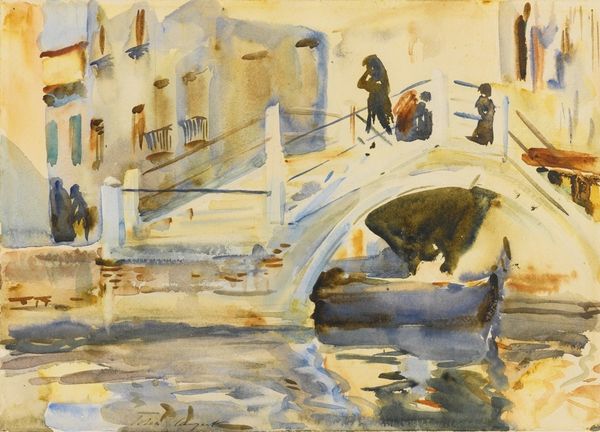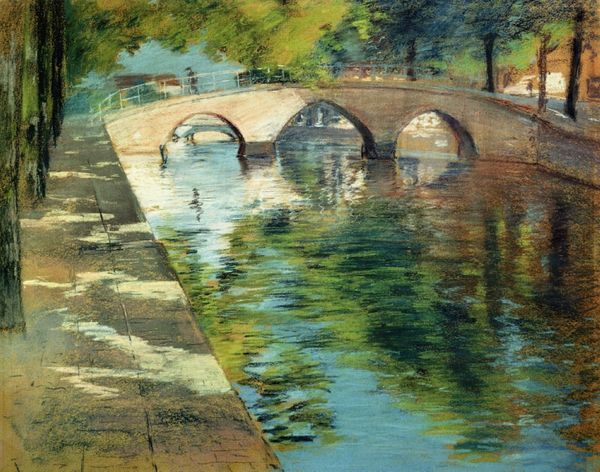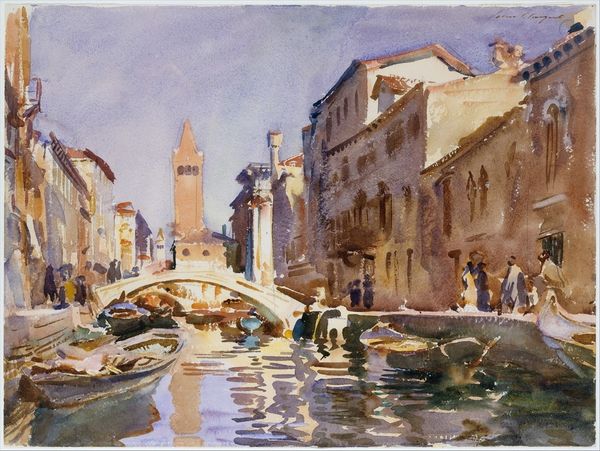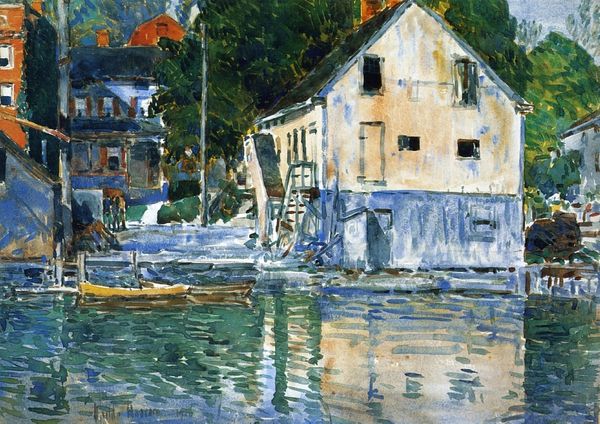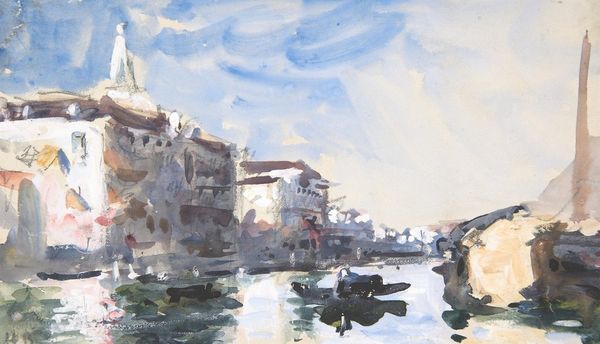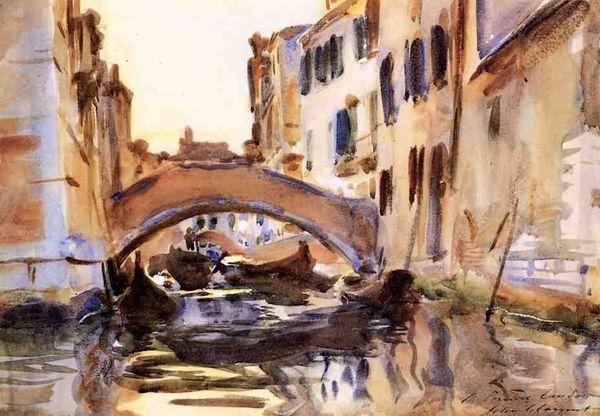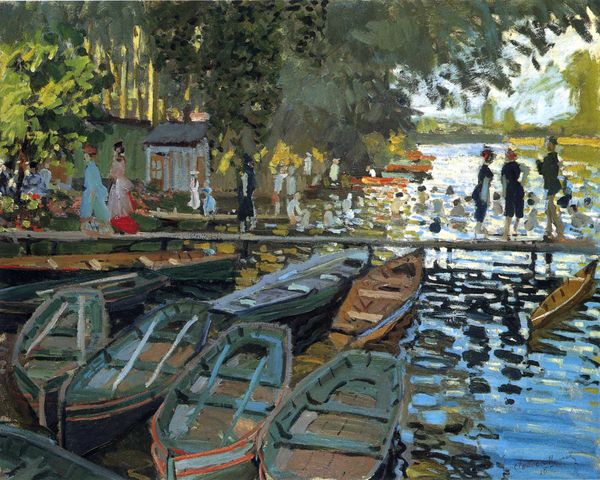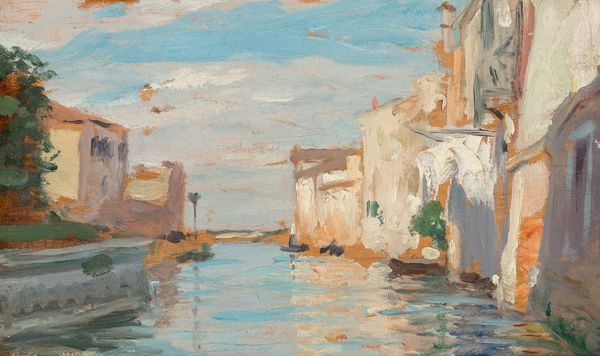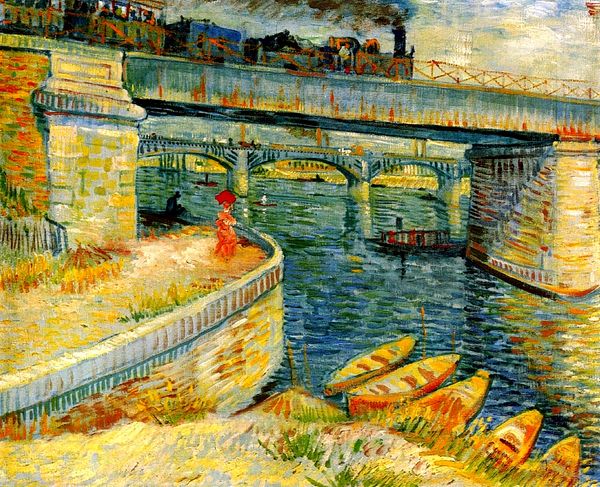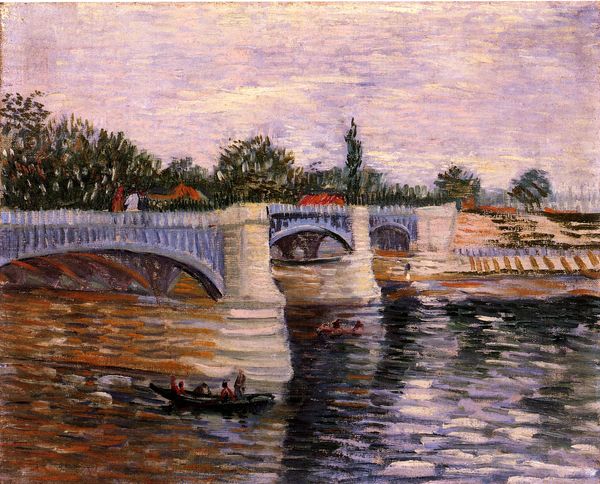
Copyright: Public domain
Curator: So, this is Korovin's "Bridge in Saint Cloud" from 1936, an oil painting done en plein air. The reflections on the water are really eye-catching. How does it strike you? Editor: It’s vibrant, almost… aggressively so? The brushstrokes are so thick, and the colours are bold. What I find particularly fascinating is how the architecture almost seems to melt into the landscape. What catches your eye about it? Curator: The materiality. Look closely at how the paint itself becomes the subject. Korovin isn't just depicting a bridge, he's presenting us with layers of oil, built up to create texture and form. The labour involved, the physical act of applying paint, is paramount. Do you notice how the brushstrokes themselves suggest the movement of water and light, almost denying the solid construction of the architectural forms? Editor: That’s interesting! It almost feels like he’s more interested in the experience of the place than an accurate representation. Does that connect with a particular movement? Curator: Certainly, it is an Impressionist technique but let's consider what "Impressionism" signifies in relation to material production. It's not just about capturing fleeting moments, but also about foregrounding the artist's subjective experience through their labor. He almost abandons traditional notions of artistic skill by displaying the physicality of the artistic act so clearly. Editor: So, he's not trying to hide the "making of" but show it. Almost celebrating the physical process of painting. Curator: Precisely! It also provokes a reflection on the art market itself – is this tangible display of manual creation perceived as high art, or is it considered craft simply due to its obvious engagement with materiality and manual process? Editor: I never thought of it that way. Seeing the focus on the application of materials rather than just the image definitely gives me a different perspective on impressionism. Curator: It is about unpacking those established definitions that keep high art in a bubble away from the materiality of creating. Editor: Definitely given me food for thought about how we value process in art. Thanks!
Comments
No comments
Be the first to comment and join the conversation on the ultimate creative platform.
